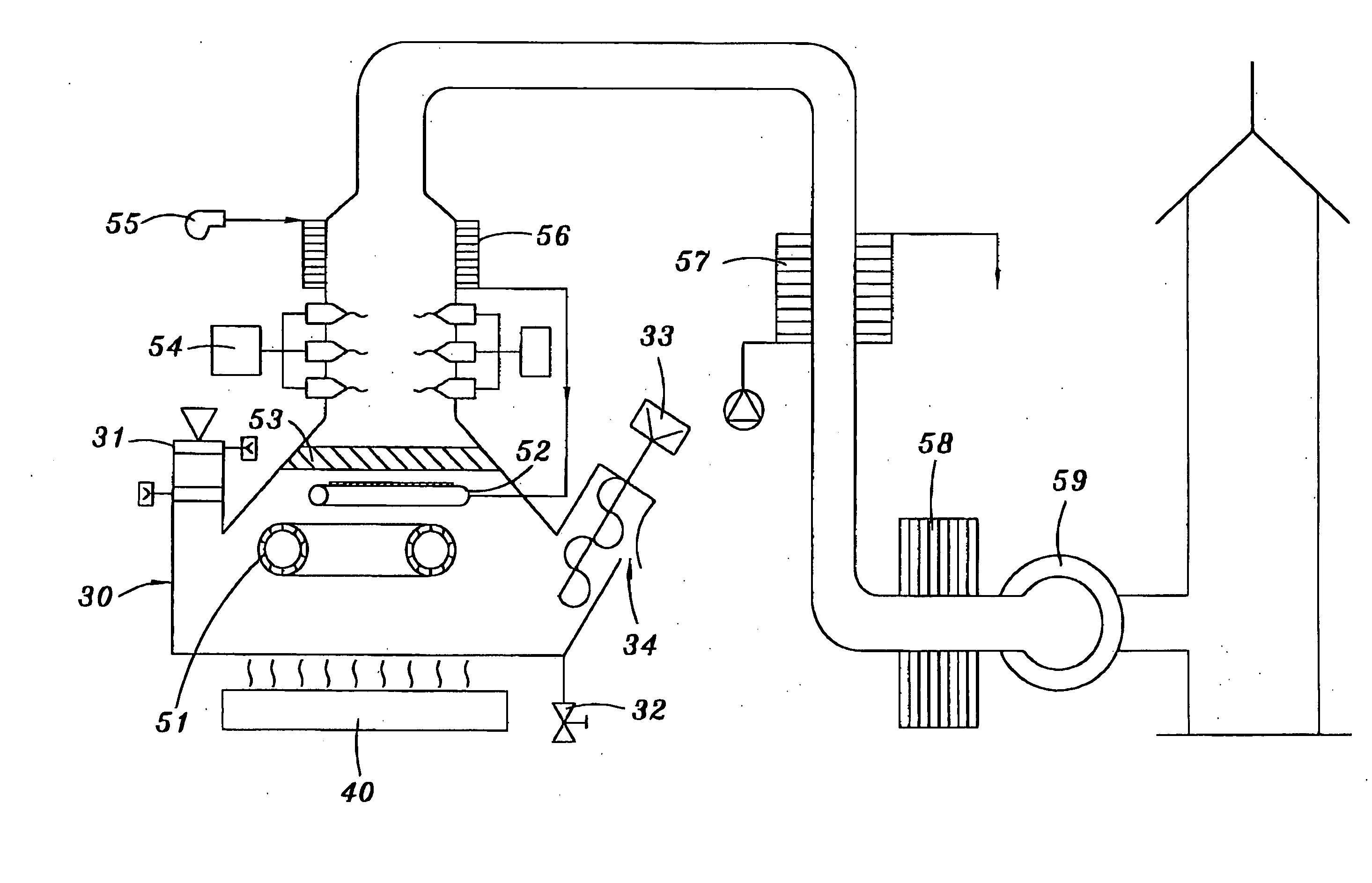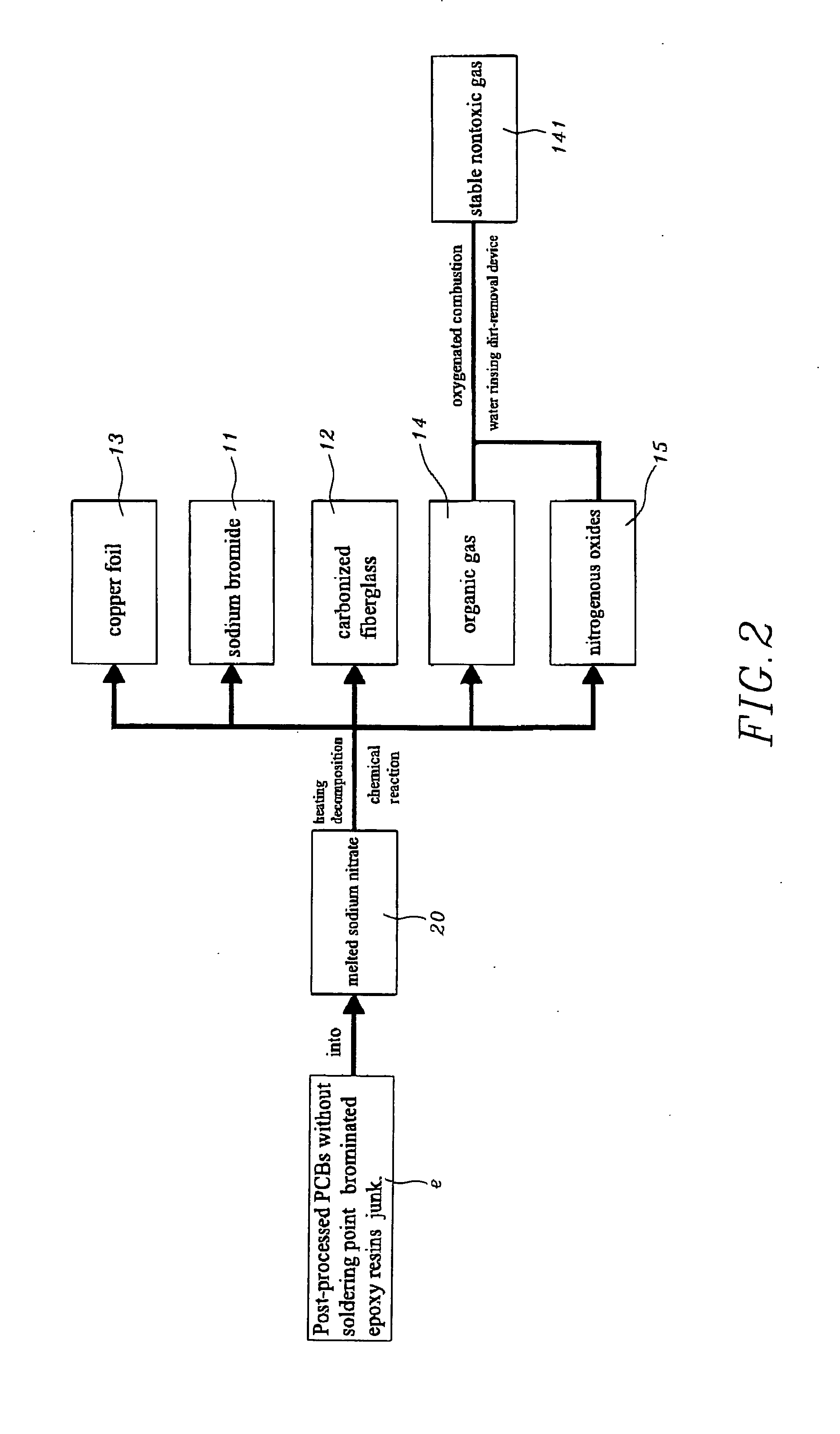Method of recycling wasted printed-circuit-board
a technology of printed circuit board and waste, which is applied in the direction of climate sustainability, electric cable installation, final product manufacturing, etc., can solve the problems of not only impurity effect, but also certain difficulty in recycling disposal, and the recycling value of brominated epoxy resin and fiberglass after collection is neglected, and consumes a lot of energy
- Summary
- Abstract
- Description
- Claims
- Application Information
AI Technical Summary
Benefits of technology
Problems solved by technology
Method used
Image
Examples
Embodiment Construction
[0026]As shown in the figures of number 1 and 2, the present invention is a method of recycling wasted printed-circuit-board with disposal steps comprising:
[0027]a. Remove all electronic components on all wasted PCBs 10 by heating them on their soldering points such that becoming wasted PCBs without any electronic component then collectively sort and dispose them for recycling use.
[0028]Heat all such wasted PCBs without any electronic component over to 200° C. to melt soldering tin on their surface layer so as to remove and collect the tin-contained-compounds, whose melting point being 200° C.; then directly collect them by vacuum tin-sucking method for recycling use.
[0029]c. Soak said wasted PCBs at step b in de-tin solution of market finished product to dissolve the tin-contained-compounds in the inner layers to separate it from copper; then directly collect all of tin-contained-compounds by said de-tin solution for recycling use.
[0030]d. Apply strong acid solution on said wasted ...
PUM
| Property | Measurement | Unit |
|---|---|---|
| temperature | aaaaa | aaaaa |
| melting point | aaaaa | aaaaa |
| melting point | aaaaa | aaaaa |
Abstract
Description
Claims
Application Information
 Login to View More
Login to View More - R&D
- Intellectual Property
- Life Sciences
- Materials
- Tech Scout
- Unparalleled Data Quality
- Higher Quality Content
- 60% Fewer Hallucinations
Browse by: Latest US Patents, China's latest patents, Technical Efficacy Thesaurus, Application Domain, Technology Topic, Popular Technical Reports.
© 2025 PatSnap. All rights reserved.Legal|Privacy policy|Modern Slavery Act Transparency Statement|Sitemap|About US| Contact US: help@patsnap.com



